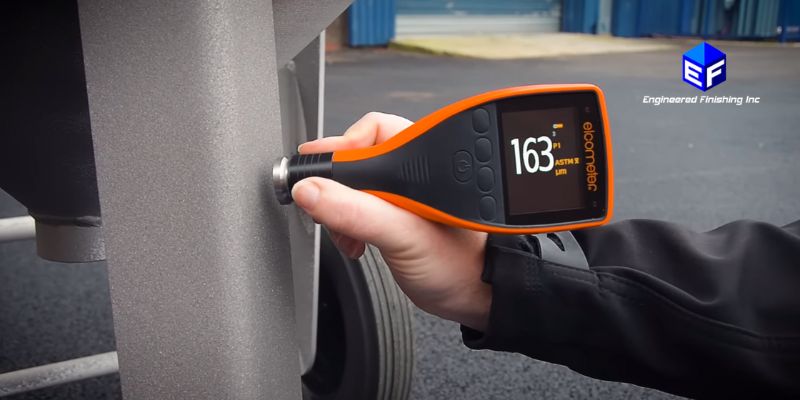In the realm of manufacturing, innovation stands as the cornerstone of progress, driving industries towards efficiency, precision, and excellence. As technology continues to evolve, the quest for improving manufacturing processes has become more nuanced, with a spotlight on surface profiling emerging as a pivotal aspect of this journey. From concept to creation, the role of surface profiling in manufacturing innovation is undeniable, offering a myriad of benefits that redefine product quality, performance, and competitiveness.
At its essence, surface profiling involves the precise measurement and analysis of a material’s surface characteristics, including its texture, roughness, waviness, and form. This intricate process serves as a critical tool for manufacturers across various sectors, facilitating deeper insights into product functionality and durability. From automotive components to biomedical devices, the ability to understand and manipulate surface properties has revolutionized the way products are designed, produced, and optimized for diverse applications.
Enhanced Product Performance and Reliability:
- Surface profiling enables precise measurement and analysis of surface characteristics.
- Identifies flaws and irregularities that could compromise product integrity over time.
- Facilitates adjustments to minimize friction, improve adhesion, and enhance durability.
Elevated Quality Control Standards:
- Establishes stringent quality benchmarks through meticulous surface analysis.
- Detects deviations from predetermined tolerances, minimizing the risk of defects and recalls.
- Fosters a culture of excellence where precision and consistency are paramount.
Catalyst for Technological Advancement:
- Provides insights into surface interactions at the microscopic level, driving innovation in material science.
- Facilitates the development of novel materials with tailored properties, unlocking new possibilities in diverse industries.
- Expands the boundaries of technological advancement and opens doors to new markets and applications.
Customization and Personalization:
- Enables adaptation of surface characteristics to meet specific end-user requirements and preferences.
- Enhances product appeal and functionality, fostering brand loyalty and driving demand.
- Facilitates the creation of products that resonate with individual tastes and lifestyles.
Optimized Manufacturing Processes:
- Surface profiling guides process optimization by providing insights into material behavior during manufacturing.
- Helps streamline production workflows and minimize waste by identifying areas for improvement.
- Contributes to lean manufacturing principles by promoting efficiency and resource utilization.
Cross-Industry Applications:
- Surface profiling transcends various industries, including automotive, aerospace, electronics, and biomedical sectors.
- Plays a crucial role in ensuring the safety, reliability, and performance of critical components across diverse applications.
- Drives innovation and fosters collaboration between different sectors, leading to cross-pollination of ideas and technologies.
Environmental Sustainability:
- Surface profiling contributes to sustainability efforts by optimizing material usage and reducing waste.
- Helps identify opportunities for eco-friendly coatings and surface treatments that minimize environmental impact.
- Facilitates the development of energy-efficient processes by reducing friction and improving material performance.
Regulatory Compliance and Safety:
- Ensures compliance with regulatory standards and industry certifications by maintaining precise surface characteristics.
- Helps manufacturers meet stringent safety requirements, particularly in sectors such as healthcare and aerospace.
- Supports traceability initiatives by providing detailed records of surface profiles for quality assurance and audit purposes.
Supply Chain Resilience:
- Surface profiling enhances supply chain resilience by ensuring consistency and reliability in manufacturing processes.
- Facilitates supplier qualification and risk management efforts by evaluating surface quality across various components and materials.
- Minimizes disruptions and downtime by proactively addressing surface-related issues before they escalate.
Data-Driven Decision-Making:
- Surface profiling generates valuable data insights that inform decision-making across the product lifecycle.
- Enables predictive maintenance strategies by monitoring surface degradation and wear patterns over time.
- Supports continuous improvement initiatives by identifying trends and correlations between surface characteristics and performance metrics.
Emerging Technologies Integration:
- Integrates seamlessly with emerging technologies such as artificial intelligence and machine learning for advanced surface analysis.
- Enables automation of surface inspection processes, reducing manual labor and increasing throughput.
- Facilitates real-time monitoring and feedback loops, allowing for agile response to surface quality deviations.
Educational and Research Advancements:
- Surface profiling fosters collaboration between academia and industry, driving research and educational advancements.
- Provides valuable case studies and real-world applications for students and researchers studying material science and engineering.
- Stimulates innovation by encouraging interdisciplinary approaches to surface characterization and optimization.
Global Competitiveness and Market Differentiation:
- Surface profiling enables manufacturers to differentiate their products in the global marketplace by offering superior surface quality and performance.
- Helps maintain a competitive edge by consistently delivering products that meet or exceed customer expectations for aesthetics, functionality, and reliability.
- Positions companies as industry leaders known for their commitment to quality and innovation, enhancing brand reputation and market share.
Rapid Prototyping and Iterative Design:
- Facilitates rapid prototyping and iterative design processes by providing real-time feedback on surface characteristics.
- Allows designers and engineers to quickly iterate and refine product designs based on surface profiling data, accelerating time-to-market.
- Promotes a culture of innovation and experimentation, where new ideas can be tested and optimized with greater speed and efficiency.
Customer Satisfaction and Retention:
- Surface profiling contributes to higher levels of customer satisfaction by delivering products that consistently meet or exceed performance expectations.
- Helps build trust and loyalty among customers who value reliability, precision, and attention to detail.
- Encourages positive word-of-mouth referrals and repeat business, driving long-term growth and sustainability.
Cross-Functional Collaboration and Knowledge Sharing:
- Surface profiling fosters cross-functional collaboration between departments such as engineering, manufacturing, quality assurance, and marketing.
- Promotes knowledge sharing and best practices across different areas of expertise, leading to more holistic and innovative solutions.
- Encourages interdisciplinary teamwork and problem-solving, where diverse perspectives contribute to well-rounded and effective outcomes.
Continuous Innovation and Adaptation:
- Surface profiling encourages a mindset of continuous innovation and adaptation in response to changing market dynamics and customer needs.
- Drives a culture of learning and improvement, where lessons gleaned from surface profiling data inform future product development strategies.
- Supports agile manufacturing principles by empowering teams to quickly pivot and respond to emerging trends and opportunities.
Industry Standards and Best Practices Development:
- Surface profiling contributes to the establishment of industry standards and best practices related to surface quality, measurement techniques, and performance criteria.
- Facilitates collaboration between industry stakeholders, regulatory bodies, and standards organizations to define and refine quality benchmarks.
- Ensures consistency and interoperability across supply chains, enabling seamless integration of components and materials from different sources.
Conclusion:
In summary, surface profiling serves as a linchpin of manufacturing innovation, driving advancements in product quality, performance, and customer satisfaction. By embracing its multifaceted benefits and integrating surface profiling technologies into their workflows, manufacturers can position themselves for success in today’s competitive global marketplace. As the manufacturing landscape continues to evolve, the role of surface profiling will remain indispensable in shaping the future of innovation and excellence.






